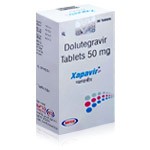Initial Treatment for HIV-1 Infection: how todays first-line care starts, succeeds, and evolves


Starting antiretroviral therapy (ART) the right way — swiftly, safely, and with a regimen you can stick to—is the single most important step after an HIV-1 diagnosis. Over the past decade, first-line treatment has become simpler, more potent, and far more forgiving than in earlier eras. Most people can begin therapy the day they’re diagnosed, use a once-daily pill with minimal side effects, reach an undetectable viral load within months, and then live a normal life span while protecting their partners—because when the virus is undetectable, it is untransmittable (U=U). Current guidelines and real-world programs all point in the same direction: act early, choose an integrase inhibitor–based regimen unless there’s a specific reason not to, and personalize around co-infections, pregnancy potential, drug interactions, and patient preferences.
What clinicians mean by “initial treatment”
“Initial treatment” refers to the first fully suppressive ART regimen chosen for someone who is treatment-naïve. In 2025, leading guidelines recommend that most adults and adolescents start with an integrase strand transfer inhibitor (INSTI)–based backbone because of its speed to viral suppression, high resistance barrier, and tolerability. Preferred options include single-tablet bictegravir/tenofovir alafenamide/emtricitabine (BIC/TAF/FTC) or dolutegravir plus a tenofovir/emtricitabine (or lamivudine) backbone. In carefully selected patients without hepatitis B co-infection and with a low likelihood of transmitted resistance, the two-drug regimen dolutegravir/lamivudine (DTG/3TC) is an accepted first-line choice. These recommendations are anchored in large comparative trials and continuously updated national and international guidelines.
Rapid start is now standard
A major evolution in care is rapid or same-day initiation. If there’s no acute contraindication (e.g., suspected cryptococcal meningitis), clinicians can start ART immediately after diagnosis while baseline labs and genotype return. Rapid start improves linkage to care, raises the odds of viral suppression at one year, and reduces early loss to follow-up — outcomes demonstrated across randomized and programmatic settings. Practically, that means you can leave your first visit with a starter regimen in hand, then refine once lab results are back.
What is “best” or “first choice” for HIV-1?
There isn’t a single best pill for everyone, but there is a clear class preference. For most, an INSTI-based regimen is first choice. Bictegravir/TAF/FTC (coformulated as a once-daily tablet) is widely used because it bundles potency, a high resistance barrier, and few drug interactions. Dolutegravir-based regimens are equally first-line globally; in many countries, the fixed-dose combination TDF/3TC/DTG (often called TLD) is the backbone of national programs for its durability and cost-effectiveness. Where appropriate, DTG/3TC simplifies to two drugs without compromising outcomes. The best regimen for you balances efficacy, side-effect profile, co-morbidities (e.g., kidney or bone disease steering away from TDF), hepatitis B co-infection (which requires a tenofovir- and FTC/3TC-containing backbone), potential pregnancy, TB treatment interactions, and your preferences around pills versus injections down the line.
The first weeks: what to check and how to monitor
Before or soon after starting, clinicians check HIV genotype, hepatitis B and C serologies, renal and liver function, pregnancy status when relevant, and HLA-B*57:01 if abacavir is being considered. If hepatitis B is present, tenofovir plus FTC/3TC serves dual duty against both viruses. After you start ART, viral load is typically repeated at 4 to 8 weeks to confirm decline, then at 12 weeks, then every three to six months once suppressed. Many people see their viral load become undetectable within three months; reaching and sustaining that undetectable level is what underpins U=U and restores immune function.
Why “undetectable equals untransmittable” matters from day one
U=U isn’t a slogan; it’s the scientifically established outcome of effective ART. People living with HIV who maintain an undetectable viral load do not sexually transmit the virus. This knowledge reduces stigma, clarifies the goal of therapy, and plays a central role in counseling and adherence support during the first months of treatment.
Modern approaches shaping initial therapyToday’s approach blends potent single-tablet options, rapid start, patient-centered choice, and long-acting pathways once suppression is achieved:
- Simplified single-tablet therapy (STT): Coformulated INSTI regimens let most people take one pill daily, with or without food, minimizing pill fatigue and aiding adherence. Clinicians still screen for potential interactions with anticonvulsants, rifamycins, polyvalent cations, and certain mental-health medications.
- Two-drug initial therapy for the right candidate: Dolutegravir/lamivudine has proven non-inferiority to three-drug comparators in selected individuals (no HBV co-infection, baseline viral load not exceedingly high, and no suspicion for transmitted resistance). It’s not for everyone but is a legitimate first-line option when criteria are met.
- Long-acting injectables — after suppression: Cabotegravir/rilpivirine given monthly or every 2 months is approved for maintenance in people already suppressed on oral ART, not as a universal initial regimen. For patients who struggle with daily pills but can attend injection visits, this offers a different adherence model once the virus is controlled.
- Programmatic global first-line care: WHO-aligned programs have scaled dolutegravir-based first-line ART worldwide due to its high barrier to resistance and cost-effectiveness. Ongoing surveillance is tracking emerging resistance patterns to keep regimens optimized.
Special clinical contexts that influence the first regimen
Initial choices are tailored when pregnancy is planned or possible, in advanced opportunistic infections (where ART may be staged to avoid immune reconstitution complications), with chronic kidney disease or osteoporosis (guiding tenofovir formulation), and during TB therapy. For example, certain TB preventive or treatment regimens require dolutegravir dose adjustments or consideration of alternative agents, and rifampin can interact with multiple ART components. These are not barriers — just reasons to individualize and coordinate care.
Adherence and whole-person support
Even with powerful medications, the fundamentals determine success: consistent dosing, honest discussion of side effects, mental-health and substance-use support when needed, and practical help with insurance or program access. Rapid initiation pairs best with rapid support: text reminders, pharmacy synchronization, and shared decision-making all begin at the first visit and are as “first-line” as the pill itself. The outcome we aim for is durable suppression with a regimen you find easy to live with.
The role of Xapavir in treating HIV-1
“Xapavir” is a trade name used by some pharmacies for dolutegravir 50 mg, an INSTI that anchors many first-line regimens globally. As a component, Xapavir (dolutegravir) is combined with two nucleos(t)ide analogs (e.g., TDF/FTC, TAF/FTC, or 3TC) for a standard three-drug regimen; in selected patients, dolutegravir pairs with lamivudine alone as a two-drug option. Dolutegravir is favored because it reaches suppression quickly, has a high barrier to resistance, is generally well tolerated, and is available in many markets as cost-effective generic formulations. If a clinician prescribes Xapavir, they are prescribing dolutegravir — the same active agent in widely recommended first-line regimens — chosen and combined based on your lab profile and co-morbidities. (Note that “Xapavir” is a brand/label, not a distinct new molecule.)
Prevention innovations complement, but do not replace, initial treatment
It’s common to hear about exciting prevention tools like twice-yearly lenacapavir injections approved for PrEP in 2025. These are powerful additions to the prevention toolbox and may reshape population-level transmission dynamics, but they are not substitutes for initial ART in someone who already has HIV. For people living with HIV, the core remains oral (or later, injectable maintenance) ART that fully suppresses viral replication.
Putting it all together: a typical, modern first-line journey
Imagine a newly diagnosed person at clinic intake. After rapid counseling, the clinician starts a recommended INSTI-based regimen the same day — often a single tablet of BIC/TAF/FTC or a dolutegravir-based equivalent. Baseline labs and genotype are sent. Over the first month, a check-in confirms tolerability and pill-taking routine; the viral load has fallen sharply by week 4–8. By three months, it’s undetectable. With sustained suppression, they now enjoy the dual benefits of personal health restoration and the ability to protect partners via U=U. Later, if they struggle with daily pills or prefer injections, the care team may transition them to long-acting cabotegravir/rilpivirine for maintenance — still with regular monitoring — while continuing whole-person support for the long term.
Conclusion
The landscape of HIV-1 treatment has transformed into one of speed, simplicity, and sustained success. Starting therapy immediately with potent, well-tolerated regimens gives people the best chance of reaching undetectable status quickly, protecting their health and preventing transmission. While bictegravir- and dolutegravir-based combinations dominate as first-line choices, care is always individualized to fit co-infections, drug interactions, and personal preferences. Xapavir, as a branded form of dolutegravir, illustrates how a proven cornerstone medication continues to anchor these modern regimens. With strong medical guidance, adherence support, and the reassurance that undetectable equals untransmittable, the journey after diagnosis is no longer defined by fear but by effective, lifelong control of the virus.
Drug Description Sources: U.S. National Library of Medicine, Drugs.com, WebMD, Mayo Clinic, RxList.
Reviewed and Referenced By:
Dr. Alan Carter, PharmD Clinical pharmacist specializing in infectious diseases and chronic therapy management. Frequently cited on Drugs.com for reviewing therapeutic guidance on antiretroviral pharmacology, adherence strategies, and drug–drug interactions in HIV care.
Dr. Carol DerSarkissian, MD Board-certified in internal medicine, contributor to WebMD. Her clinical reviews focus on the management of chronic infectious diseases, including HIV, with emphasis on patient-centered treatment choices and comorbidity considerations.
Dr. Dianne B. McKay, MD Professor of Clinical Pharmacology, contributor to NIH resources. Her medical insights include the renal and metabolic implications of long-term antiretroviral therapy, guiding safe drug selection in patients with kidney involvement.
Dr. William C. Shiel Jr., MD, FACP, FACR Chief Editor at MedicineNet, affiliated with WebMD. Authored extensive content on viral infections and systemic therapies, including mechanisms of action, efficacy, and side effects of integrase inhibitors such as dolutegravir.
(Updated at Sep 30 / 2025)

